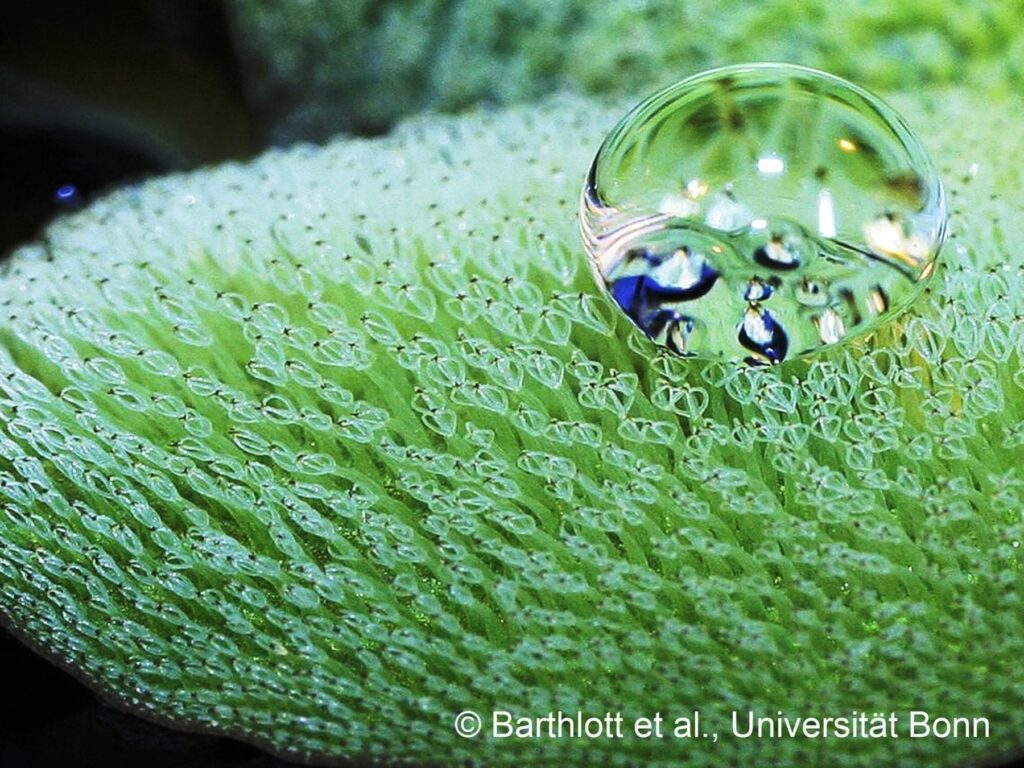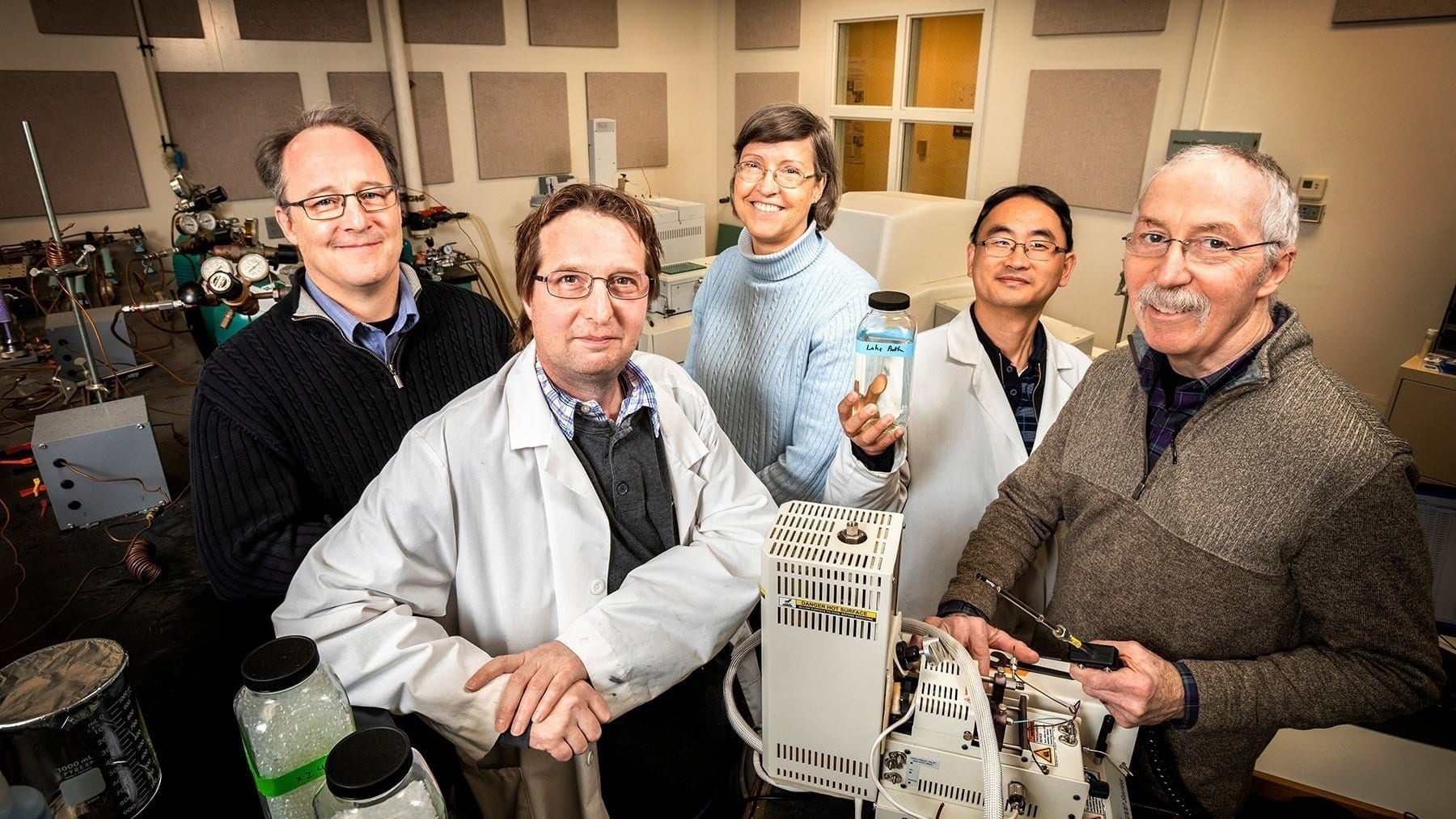
Study by the University of Bonn: High-tech surfaces could greatly reduce drag and CO2 emissions of ships
If ship hulls were coated with special high-tech air trapping materials, up to one percent of global CO2 emissions could be avoided. This is the conclusion reached by scientists from the University of Bonn together with colleagues from St. Augustin and Rostock in a recent study. According to the study, ships could save up to 20 percent of fuel as a result of reduced drag. If so-called antifouling effects are also considered, such as the reduced growth of organisms on the hull, the reduction can even be doubled. The study has now been published in the journal “Philosophical Transactions A”.
Ships are among the worst fuel guzzlers in the world. Together, they burn an estimated 250 million tonnes per year and emit around one billion tonnes of carbon dioxide into the air – about the same amount as the whole of Germany emits over the same period. The main reason for this is the high degree of drag between hull and water, which constantly slows the ship down. Depending on the type of ship, drag accounts for up to 90 percent of energy consumption. This also makes it a huge economic factor: After all, fuel consumption is responsible for half of transport costs.
Drag can be significantly reduced using technical tricks. For example, the so-called “microbubbles technology” actively pumps air bubbles under the hull. The ship then travels over a bubble carpet, which reduces drag. However, the production of the bubbles consumes so much energy that the total savings effect is very small.
Coatings retain air for weeks
Novel high-tech coatings may promise a solution. They are able to hold air for long periods of even weeks. “Around ten years ago, we were already able to demonstrate on a prototype that in principle it is possible to reduce drag by up to ten percent,” explains Dr. Matthias Mail from the Nees Institute for Biodiversity of Plants at the University of Bonn, one of the authors of the study. “Our partners at Rostock University later achieved a 30-percent reduction with another material developed by us.” Since then, various working groups have taken up the principle and developed it further. The technology is not yet mature enough for practical use. Nevertheless, the authors forecast a fuel-saving potential of at least five percent in the medium term, but more likely even 20 percent.
In their publication in the renowned “Philosophical Transactions” of the British Royal Society, founded by Isaac Newton, they calculated the economic and ecological advantages this would bring. For example, a commercial container ship on its way from Baltimore (USA) to Bremerhaven could reduce its fuel costs by up to 160,000 US dollars. Worldwide, emissions of the greenhouse gas carbon dioxide would be reduced by a maximum of 130 million tonnes.
Taking into account the reduced growth of barnacles and other aquatic organisms, which causes enormous additional drag loss, this quantity even rises to almost 300 million tonnes. This corresponds to almost one percent of global CO2 emissions. “Of course, these figures are optimistic,” says Mail. “But they show how much potential this technology has.”
Hydrophobic floating fern
The high-tech layers are based on models from nature, such as the floating fern Salvinia molesta. This is extremely hydrophobic: When submerged and pulled out again, the liquid rolls off it immediately. After that, the plant is completely dry. Or to be more accurate: It was never really wet in the first place. Because underwater the fern wraps itself in an extremely thin dress of air. This prevents the plant from coming into contact with liquid – even during a many weeks-long dive. Scientists call this behavior “superhydrophobic”.
Salvinia has tiny egg-beater-like hairs on the surface of its leaves. These are water-repellent at their base, but hydrophilic at their tip. With these hair-tips, the aquatic fern firmly “pins” a water layer around itself. Its little dress of trapped air kept in place by the water layer. Perhaps this principle will soon cause a sensation in a completely different context: as a potent lubricant for oil tankers.
Learn more: Lubricant for oil tankers
The Latest on: Microbubbles technology
[google_news title=”” keyword=”microbubbles technology” num_posts=”10″ blurb_length=”0″ show_thumb=”left”]
via Google News
The Latest on: Microbubbles technology
- Nashville Technology Newson April 25, 2024 at 11:05 pm
Dismas House is proud to be recognized as a finalist in the 2024 Best in… By acquiring Please Be Seated Event Rentals, Curated Events’ Presence and Capacity in ...
- Energy Technology Newson April 24, 2024 at 5:00 pm
Apr. 24, 2024 — Estuaries -- where freshwater rivers meet the salty sea -- are great locations for birdwatching and kayaking. In these areas, waters containing different salt concentrations mix ...
- Marvell Technologyon April 24, 2024 at 5:00 pm
Marvell Technology Group Ltd. engages in the design, development, and sale of integrated circuits. The company offers System-on-a-Chip devices, which leverages technology portfolio of intellectual ...
- Dallas Technology Newson April 24, 2024 at 7:51 am
brings to you the world’s leading experts… Save the date for the 2024 Women in Technology Awards celebrating the region's top… Mar 29, 2024, 5:30 pm CDT Technology ...
- Advancing high-resolution ultrasound imaging with deep learningon April 22, 2024 at 11:38 am
Researchers at the Beckman Institute for Advanced Science and Technology have developed a new technique to make ultrasound localization microscopy, an emerging diagnostic tool used for high-resolution ...
- Advancing high-resolution ultrasound imaging with deep learningon April 22, 2024 at 11:18 am
Researchers at the Beckman Institute for Advanced Science and Technology developed a new ... localization microscopy works by injecting microbubbles into blood vessels, where they act as contrast ...
- Infected while treated? No more, thanks to adapted space technologyon April 6, 2024 at 5:46 am
Microbubbles take away both biological and chemical contaminants. On Earth, they can use this technology to sanitize the air To test it for the purposes on Earth they injected plasma-treated air ...
- Focused ultrasound technique gets quality assurance protocolon April 4, 2024 at 5:00 pm
However, the fast-developing technology has lacked a strategy to ... Once located, the researchers inject microbubbles into the blood that travel to the targeted tissue then pop, causing small ...
- Why Is Technology Mean to Me?on April 3, 2024 at 5:00 pm
Now, I should start by saying that I am not someone with a natural animosity toward personal technology. I have been known to be completely reasonable when the supermarket self-checkout machines ...
- These CES 2024 Smart Home Tech Finds Are Now Available to Buy Onlineon March 31, 2024 at 5:00 pm
It’s essentially a smaller, more compact version of the Kara Pure, which pulls humidity from the air via desiccant technology and ... device that creates microbubbles in the water to penetrate ...
via Bing News











